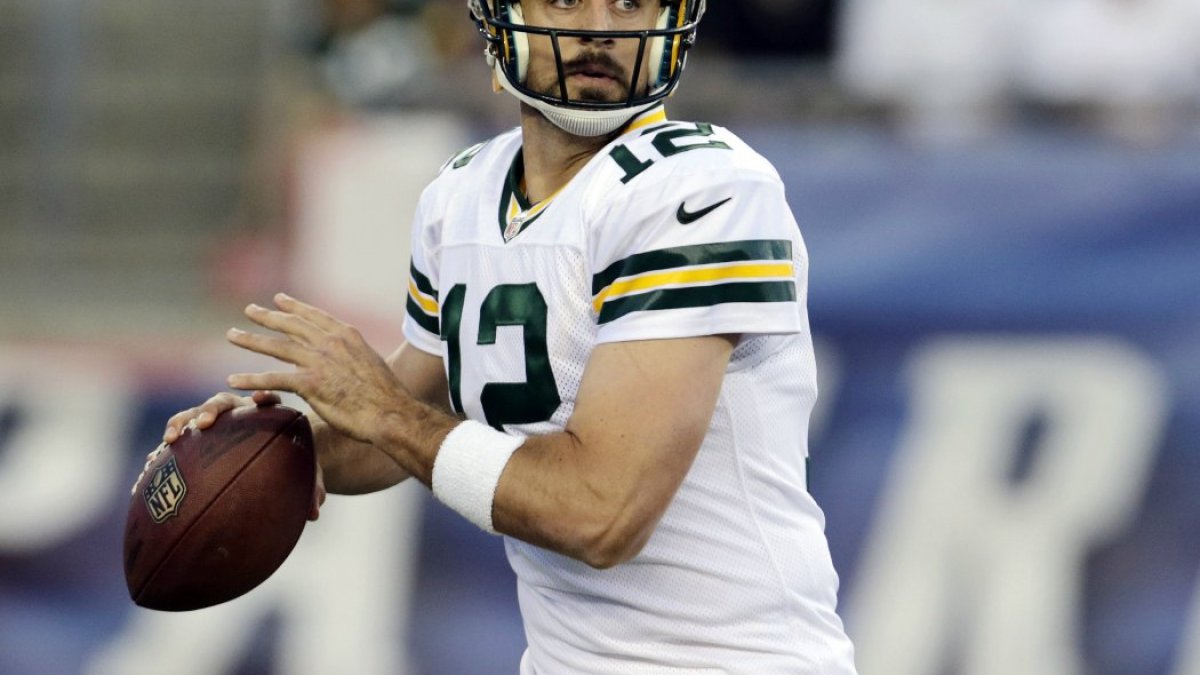Packers quarterback Aaron Rodgers ended last night’s game with a -0.8 grade overall. This isn’t a bad game, just because the number begins with a minus, but it is an average grade very close to zero for a player who threw five touchdown passes, which seems crazy on the face of it. It’s not.
On the surface, Rodgers’ raw statistics paint the picture of one of the best games of the season. 333 passing yards, five touchdown passes, no interceptions, a 138.5 passer rating; Rodgers’ should be supplanting Carson Palmer in our team of the week as the top quarterback, not earning a grade with a minus in front of it, right?
Well, not if you dig a little deeper into Rodgers’ performance on a play-by-play basis. Looking first at his touchdown passes offers a view on how raw stats inflate the perception of a solid performance. Two of his touchdown passes were good or very good throws. His first touchdown pass on a whip to Ty Montgomery was a good throw leading his receiver away from the coverage for the score, so it earned a positive grade. His third touchdown pass to James Jones was a good throw on a back-shoulder pass yet again taking advantage of a free play, so it earned a positive grade.
The other three touchdowns, however, were passes thrown short of the end zone on speed outs to Randall Cobb. Were they bad throws? No, they were expected throws with the credit going to Cobb for fighting through contact or defeating the coverage with speed to the edge. That makes these zero-graded throws: Three passes that have a massive effect on Rodgers’ statistical performance but do not increase his grade.
However, those touchdown passes aren’t the story of what takes Rodgers’ grade from a grade with a plus in front of it to a grade with a minus in front of it. The story of what takes Rodgers’ grade below zero are two plays that you aren’t likely to see mentioned anywhere else today, but are taken into account of in a play-by-play grading system.
1. Rodgers had a fumble, which displayed poor pocket management, with 8:39 remaining in the second quarter. That play earned a negative grade.
2. With 12:58 remaining in the third quarter, Rodgers forced a pass that Josh Mauga could and possibly should have been returned for six points for Kansas City. If Mauga makes this interception, it would have tacked an ugly interception onto Rodgers’ stat line. Instead, Rodgers maintained his interception-less streak at Lambeau field, but it is a negatively graded play regardless. These are poor plays on Rodgers’ part that bring his game grade down that won’t show up on any widely quoted statistical analysis of his performance.
Context is crucial with everything in football, and if you believe we are saying that Rodgers had a poor game last night because his grade has a minus in front of it, then let me set your mind at ease; I do not think Rodgers played a poor, subpar game last night and neither does anybody else at Pro Football Focus. Rodgers did his job last night, but his job was executing simple throws, putting the ball quickly in the hands of receivers like Randall Cobb in favorable matchups on short throws, and allowing others to do the heavy lifting.
But for a couple of poor plays, his overall grade would have matched the sort of grade that you would be expecting to see from him, but those poor plays, coupled with the relative ease of some of his scores mean his performance last night was far closer to average than it was to the fantastic performance the box score suggests. The context surrounding his grade is crucial.
The greatness of Rodgers' performance last night was in the intangibles. Recognizing the blitz, drawing the defense offsides, catching the Chiefs in bad situations and exploiting those scenarios with simple passes to open receivers. But you cannot — and we do not try to — quantify intangibles, or what comes pre-snap. Our system grades what can be graded — the execution of the play post-snap — and in that regard Rodgers did not stand out in the same way that his statistics did.



 © 2025 PFF - all rights reserved.
© 2025 PFF - all rights reserved.